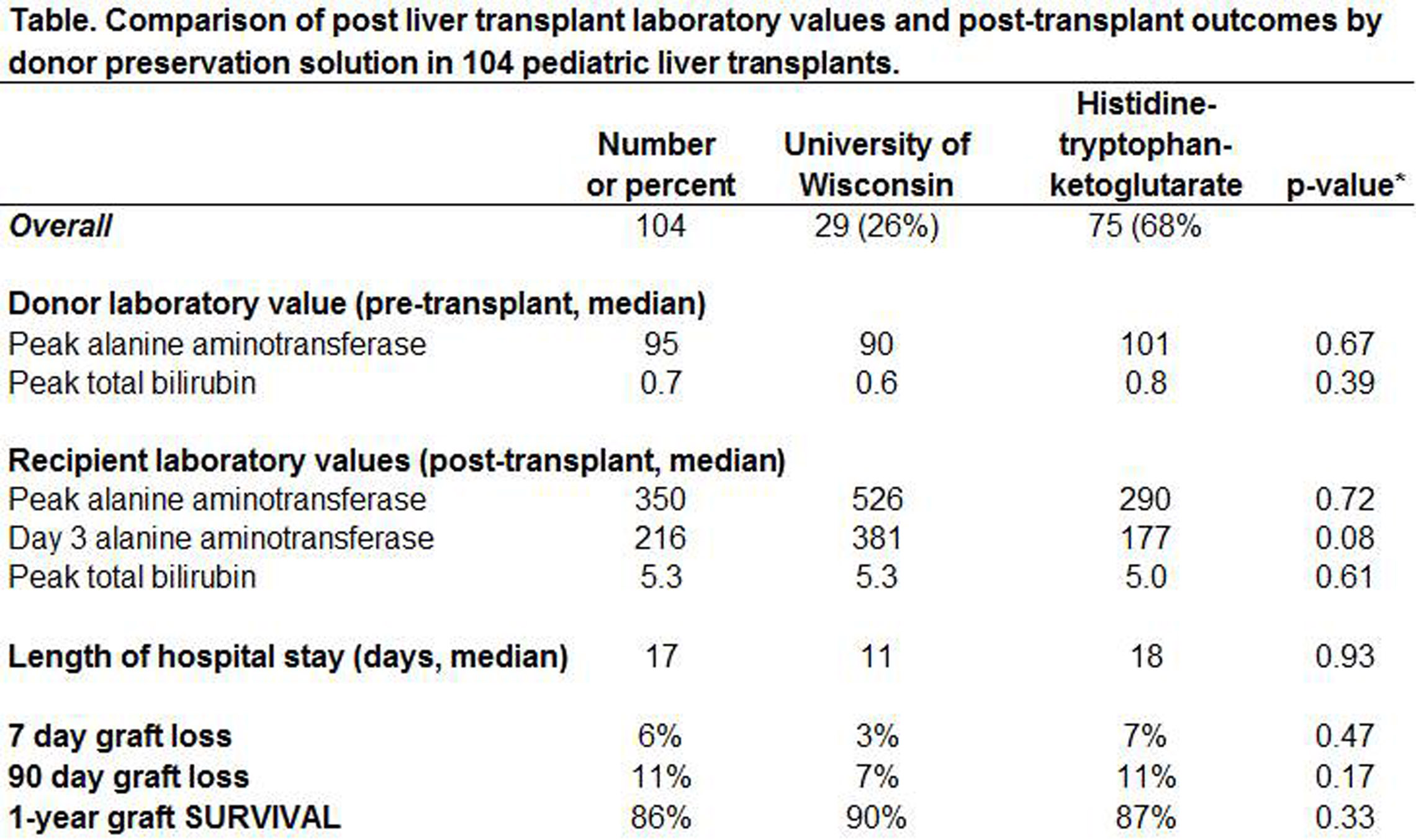Comparison of University of Wisconsin (UW) and Histidine-Tryptophan-Ketoglutarate (HTK) Solutions in Pediatric Liver Transplantation
Richard Mangus1, Joel R Schroering1, Taylor J Hathaway1, Chandrashekhar A Kubal1.
1Department of Surgery, Transplant Division, Indiana University School of Medicine, Indianapolis, IN, United States
Introduction: University of Wisconsin (UW) and Histidine-tryptophan-ketoglutarate (HTK) solutions are the two primary organ preservation solutions used in the United States. Multiple studies have been published comparing the two solutions in adult liver transplantation, most showing similar long-term results. This study analyzes the two solutions in pediatric liver transplantation at a single center.
Methods: All pediatric liver transplants performed at our center from 2001-2017 were reviewed. Recipients were grouped based on the type of preservation solution used. Outcome measures included early graft function, as well as graft and patient survival. Early graft function was assessed by comparing 1-, 7-, 14-, and 30-day aspartate and alanine aminotransferases, and total bilirubin levels. Survival outcomes were compared between the two groups at 7-, 90- and 365-days post-transplant. Primary use of HTK began at our center as of May 2003. Operative technique, immunosuppressive protocols, and donor acceptance criteria remained uniform among participating surgeons throughout the study period.
Results: There were 104 pediatric liver transplants with complete data during the study period, 75 preserved with HTK (68%) and 29 with UW (26%). The two groups had similar recipient and donor demographics. The locally procured organs were more likely to be preserved with HTK as that was the preferred solutions of the local center. Cold and warm ischemia times were similar between the groups. Peak alanine-aminotransferase (ALT) post-transplant was higher in the UW group at both peak and post-transplant day 3. The peak total bilirubin levels were similar. Graft survival was statistically similar in the UW and HTK groups at 7-, 90- and 365-days post-transplant.

Conclusions: Use of HTK has been recommended in pediatric liver transplantation because of its low viscosity which may improve blood clearance from the small pediatric vessels. This study provides evidence that use of HTK in pediatric liver transplantation is safe, and use of this solution results in outcomes which are similar to those seen for UW.
